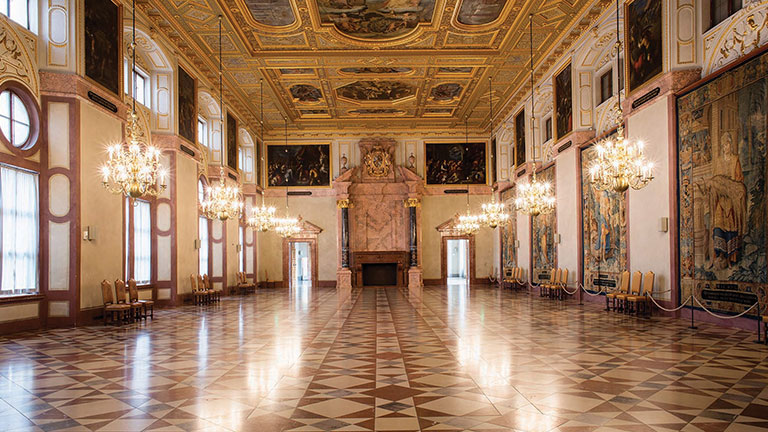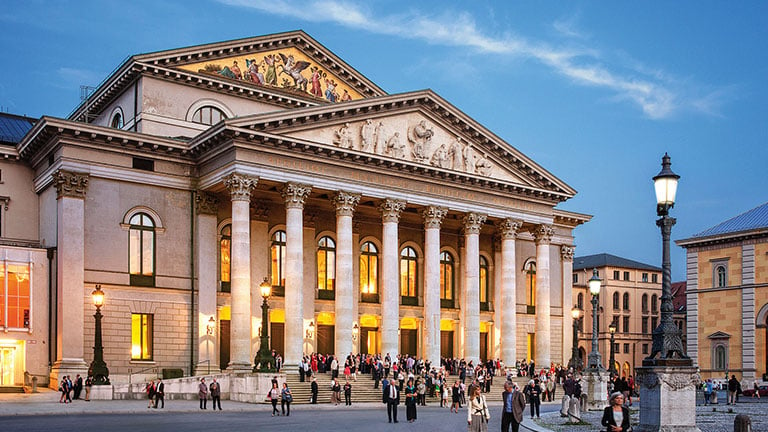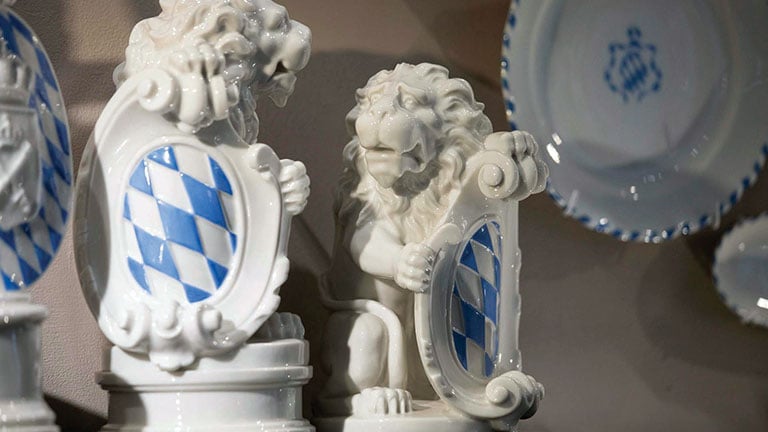A Cultural Guide to Magnificent Munich
From Renaissance masterpieces to rococo theaters, Bavaria’s capital brims with beauty

For many travelers, autumn in Munich conjures up images of biergartens, lederhosen and oompah bands. But there’s more to the Bavarian capital than Oktoberfest. This imperial city has long prided itself on its artistic and cultural heritage, thanks in large part to King Ludwig I.
In the early 1800s, the Bavarian monarch, himself an art lover, set out to create in Munich an art hub the world simply couldn’t ignore. He sent emissaries to Greece and Rome to scoop up ancient gems. And he scoured Europe for the finest paintings and sculptures to furnish what would become Munich’s impressive Kunstareal, a cultural district in the Maxvorstadt neighborhood, near the city center.
Today, the Kunstareal includes 18 art museums, 40 galleries and numerous cultural institutions. Elsewhere in Munich lie still more museums, theaters and opera houses.

Must-visit museums
Start your art immersion at the district’s trio of Pinakothek (German for “picture gallery”) museums. The Alte (old) Pinakothek began as Ludwig I’s personal collection. European paintings from the 14th to 18th centuries by the likes of Raphael, El Greco and Rembrandt are displayed here. And through at least 2026, while the neighboring Neue (new) Pinakothek is closed for renovations, its exhibition From Turner to Van Gogh showcases a selection of masterpieces by 19th-century artists. Lastly, the Pinakothek der Moderne is home to four museums showing collections of late modern and contemporary art, graphic art, design and architecture.
Also in the Kunstareal, the Museum Brandhorst features works by 20th- and 21st-century artists, including more than 100 pieces by Andy Warhol, the largest such collection in Europe. Visitors more interested in ancient art and culture should check out the Glyptothek, with its Greek and Roman sculptures.

Culture on stage
Munich showcases 350 years of classical and contemporary opera at venues across the city, beginning with the Nationaltheater, a grand colonnaded building home to the Bavarian State Opera and the Bavarian State Ballet.
Opera, musical theater and cabaret take the stage at Munich’s 1,100-seat Prinzregententheater, a venue originally built to stage the operas of Richard Wagner known for its distictive combination of Art Nouveau and classical elements. And not far from the National Theater is the small 18th-century Cuvilliés Theater, a rococo venue adorned with sparkling gold leaf and red brocade.

Castle collections
Outfitted with marble columns, parquet flooring and crystal chandeliers, Munich’s palaces are touchstones of Bavarian culture.
The Residenz, in the heart of the old city, served four centuries of Wittelsbach royals as their seat of government and primary home. Moving through room after room of marble busts, hand-carved furniture, jewel-toned frescoes as well as a gilded throne room, visitors encounter the grandeur of daily imperial life.
Even more elaborate is Munich’s 17th-century Nymphenburg Palace. The castle, surrounded by formal gardens and flowering trees, served as the Wittelsbachs’ favorite summer retreat. Inside, the palace exhibits the Gallery of Beauties, King Ludwig I’s collection of 37 portraits of Munich’s loveliest ladies; sky blue silk-upholstered furniture and delicate vases made in the Nymphenburg Porcelain Manufactory next door.
Tips for visiting
If you plan to visit several museums, consider buying a Munich Card (€5.90 for one day*), with discounted admission to top attractions, or a Munich City Pass (€37.90 for one day), which includes free admission to more than two dozen museums and attractions. You also can purchase discount cards with an optional public transportation add-on.
All Pinakothek museums and the Brandhorst charge just €1 on Sundays. If you’re not visiting on a Sunday, buy a Kombiticket (€12) for discounted entry to multiple of these museums in a single day (individual museum tickets cost €9–10 each).
Consider annual and 14-day passes to all of Bavaria’s state-owned castles—including those in Munich—if you’re visiting more than four castles or traveling with a family.
Buy museum and castle tickets and passes online, at the attractions’ admission desks, or at the Infopoint office in Munich’s old city, where you can get information on hours, reservations, passes and tickets to many of the 1,300 museums and castles in Munich and throughout Bavaria.
*All prices accurate at time of publication. Check with attractions for current admission charges.
